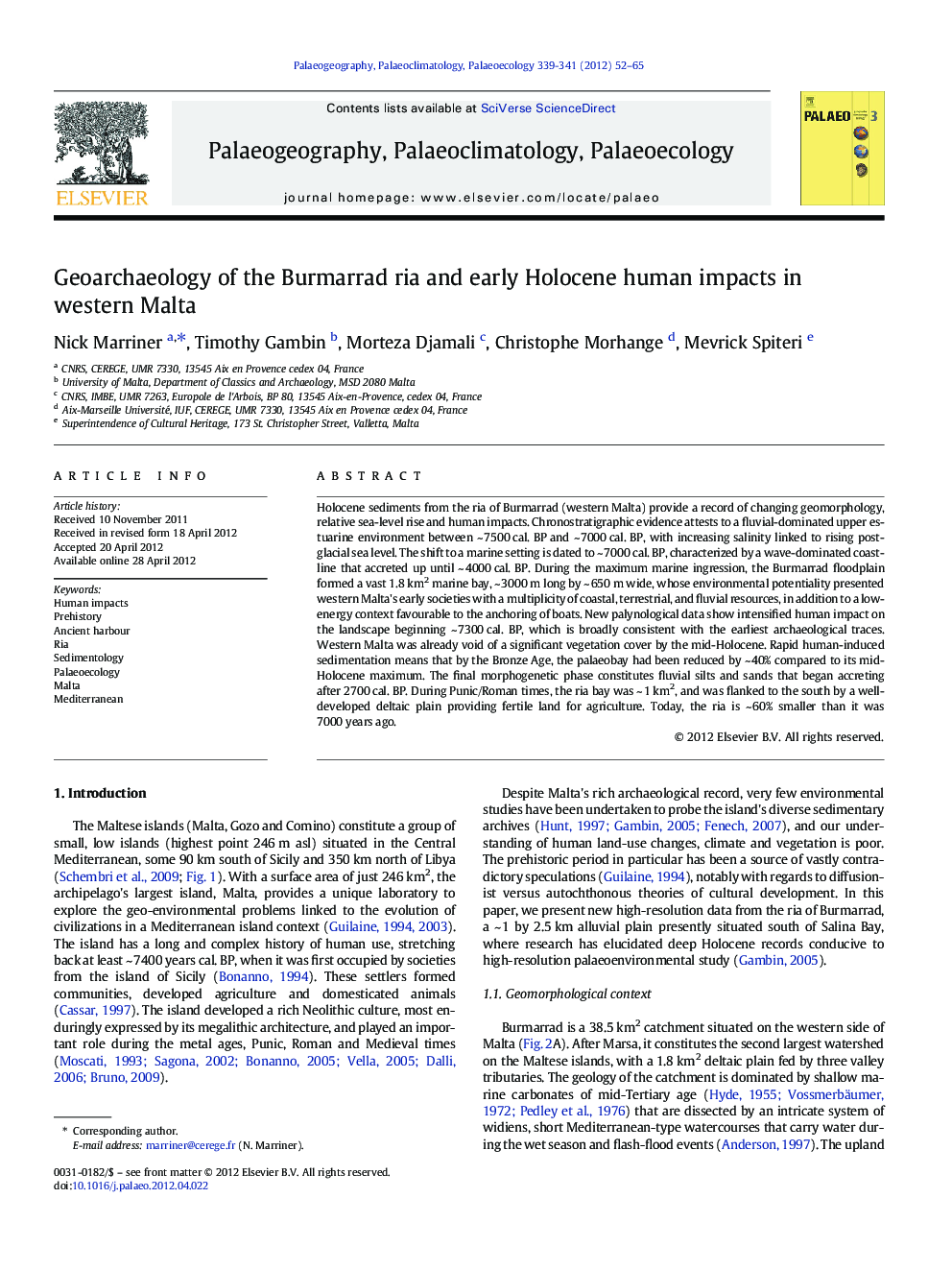| کد مقاله | کد نشریه | سال انتشار | مقاله انگلیسی | نسخه تمام متن |
|---|---|---|---|---|
| 4466881 | 1622230 | 2012 | 14 صفحه PDF | دانلود رایگان |

Holocene sediments from the ria of Burmarrad (western Malta) provide a record of changing geomorphology, relative sea-level rise and human impacts. Chronostratigraphic evidence attests to a fluvial-dominated upper estuarine environment between ~ 7500 cal. BP and ~ 7000 cal. BP, with increasing salinity linked to rising post-glacial sea level. The shift to a marine setting is dated to ~ 7000 cal. BP, characterized by a wave-dominated coastline that accreted up until ~ 4000 cal. BP. During the maximum marine ingression, the Burmarrad floodplain formed a vast 1.8 km2 marine bay, ~ 3000 m long by ~ 650 m wide, whose environmental potentiality presented western Malta's early societies with a multiplicity of coastal, terrestrial, and fluvial resources, in addition to a low-energy context favourable to the anchoring of boats. New palynological data show intensified human impact on the landscape beginning ~ 7300 cal. BP, which is broadly consistent with the earliest archaeological traces. Western Malta was already void of a significant vegetation cover by the mid-Holocene. Rapid human-induced sedimentation means that by the Bronze Age, the palaeobay had been reduced by ~ 40% compared to its mid-Holocene maximum. The final morphogenetic phase constitutes fluvial silts and sands that began accreting after 2700 cal. BP. During Punic/Roman times, the ria bay was ~ 1 km2, and was flanked to the south by a well-developed deltaic plain providing fertile land for agriculture. Today, the ria is ~ 60% smaller than it was 7000 years ago.
► Chronostratigraphy and sediment architecture of a ria in western Malta is explored.
► Holocene record of changing geomorphology, sea-level rise and human impacts.
► Palynological data show human impact on the landscape beginning ~ 7300 cal. BP.
Journal: Palaeogeography, Palaeoclimatology, Palaeoecology - Volumes 339–341, 1 July 2012, Pages 52–65